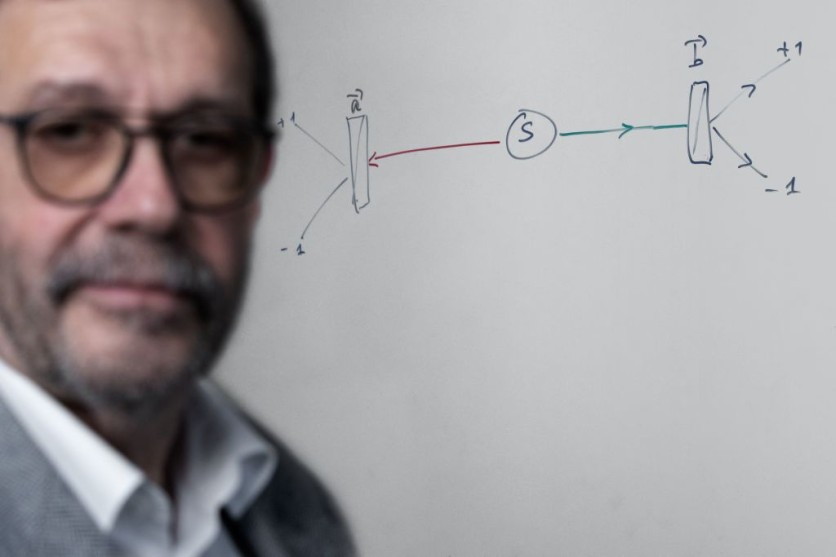There are quantum mechanics interpretations that suggest the universe is described by a single universal wave function that splits and multiplies constantly, which will produce a new reality for every possible quantum interaction.

The realization was discovered that quantum mechanics have wave-like properties, which were later on confirmed by physicists. In addition, early quantum theorists believed that the particles were smeared out over space in the shape of a wave.
However, the Copenhagen interpretation came into the picture that provides an alternative interpretations to all of this. In fact, it is one of the most popular interpretation among physicists today, according to Space.
The Copenhagen Interpretation
In the Copenhagen interpretation, the wave function doesn't exist, rather, it's a mathematical convenience used to describe a cloud of quantum mechanical probabilities for where finding a subatomic particle is highly possible.
However, there are several issues with the interpretation. One is it's unclear how the wave function goes from a cloud of probabilities before measurement to simply not existing the moment an observation is made.
This leads to another idea that there could be something more meaningful to the wave function.
Also Read: Quantum Mechanics: Orthodoxy of Copenhagen Interpretation may be replaced by Pilot Wave Theory
Universal Wave Function
Wave function is an interesting property of quantum particles. When two particles interact, they don't only bump into each other, but the wave functions overlap. As a result, there are no two separate wave functions but a single wave function that describes both particles at the same time.
When the particles go their separate ways, there's still a united wave function, which is called quantum entanglement. With every new entanglement comes a single wave function that describes all combined particles. Therefore, there is a single wave function that describes the whole universe.
In this interpretation, every time a quantum particle interacts with another quantum particle, the universal wave function splits into several sections with different universes containing each of the different possible results. This gives birth to a multiverse.
The bottomline is, quantum particles that entangle with each other will get you multiple universes that are created repeatedly. Each one is identical.
The idea of "many worlds" has been around since the 1950s, but it gained prominence in the 1970s, in which many theorists started to believe that within each quantum interaction, there's a different alternative universe.
The Many-Worlds Interpretation: Many Universes
The idea of many worlds manipulation brings some new interpretations to the Copenhagen interpretation. There are numerous worlds in which there is more than one outcome of a quantum interaction. In this idea, the universal wave function is not destroyed when an observation is made. Rather, it just splits into a number of new realities.
The many worlds interpretation is able to explain the "spooky action at a distance" that happens in quantum entanglement. It is believed that no matter how far away entangled particles may be, they continue to be connected to each other. As a result, when one particle's state is measured or observed, it instantly alters the state of the other particle, no matter how far away it is. This can be explained by the fact that the change in state of the particle is instantaneously shared in all of the possible worlds.
Related Article: Quantum Mechanics Rules Even The Most Massive Space Objects
This article is owned by Tech Times
Written by April Fowell
ⓒ 2025 TECHTIMES.com All rights reserved. Do not reproduce without permission.




